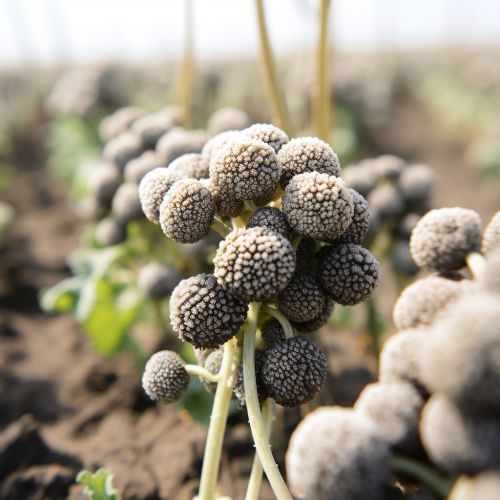Aflatoxin
Introduction
Aflatoxins are a family of toxins produced by certain fungi that are found on agricultural crops such as maize (corn), peanuts, cottonseed, and tree nuts. The main fungi that produce aflatoxins are Aspergillus flavus and Aspergillus parasiticus, which are abundant in warm and humid regions of the world. Aflatoxins are potent carcinogens and may affect all organ systems, especially the liver and kidneys. It is considered as a significant risk factor for hepatocellular carcinoma, a type of liver cancer.
Classification
Aflatoxins are naturally occurring mycotoxins that are produced by many species of Aspergillus, a fungus. There are four main types of aflatoxins: B1, B2, G1, and G2. These are produced by both Aspergillus flavus and Aspergillus parasiticus. Aflatoxin B1 is considered the most toxic and is produced in larger quantities than any other type. In addition to these, two other types, M1 and M2, are also found in the milk of animals that are fed contaminated feed.
Biosynthesis
The biosynthesis of aflatoxins involves a series of enzymatic reactions. The process begins with the conversion of acetate and malonate to norsolorinic acid. This compound is then converted to averantin, which undergoes a series of oxidations and reductions to form averufin. Averufin is then converted to versicolorin B, which is finally converted to aflatoxin B1. The enzymes involved in this process are encoded by genes located in a cluster on the chromosome of the fungus.
Occurrence and Exposure
Aflatoxins are found in areas with hot and humid climates, which are conducive to the growth of Aspergillus fungi. These toxins can contaminate crops in the field, at harvest, and during storage. Humans can be exposed to aflatoxins by consuming contaminated plant products, especially groundnuts, maize, and their derivative products. In addition, aflatoxins can be present in the milk of animals that have consumed aflatoxin-contaminated feed, leading to a secondary source of exposure.


Health Effects
Aflatoxins have potent toxic effects on the liver. Chronic exposure to aflatoxins can lead to liver cirrhosis and hepatocellular carcinoma, a type of liver cancer. Aflatoxins can also cause an acute toxic syndrome, aflatoxicosis, which is characterized by vomiting, abdominal pain, pulmonary edema, convulsions, coma, and death. In addition to their hepatotoxic effects, aflatoxins can also impair the immune system and cause growth retardation in children.
Detection and Analysis
Various methods have been developed for the detection and quantification of aflatoxins in food and feed samples. These include thin-layer chromatography (TLC), high-performance liquid chromatography (HPLC), and enzyme-linked immunosorbent assay (ELISA). More recently, advanced techniques such as liquid chromatography-mass spectrometry (LC-MS) and molecularly imprinted polymers (MIPs) have been used for aflatoxin detection.
Regulation
Due to their toxic and carcinogenic effects, many countries have regulations regarding the permissible levels of aflatoxins in food and feed. The World Health Organization (WHO) and the Food and Agriculture Organization (FAO) have provided guidelines to regulate the levels of aflatoxins in food. In the United States, the Food and Drug Administration (FDA) has set maximum permissible levels of aflatoxins in food and feed.
Prevention and Control
Prevention and control of aflatoxin contamination involve good agricultural and manufacturing practices. These include proper crop rotation, use of resistant crop varieties, timely harvesting, and proper drying and storage of crops. In addition, various physical, chemical, and biological methods can be used to decontaminate aflatoxin-contaminated food and feed.
